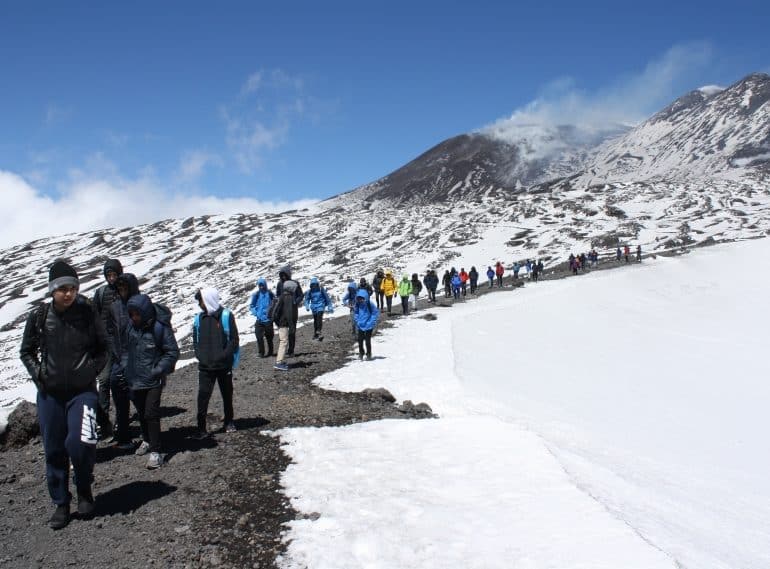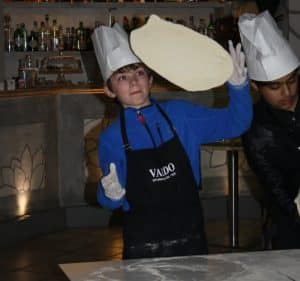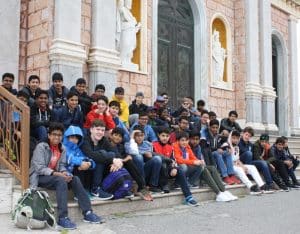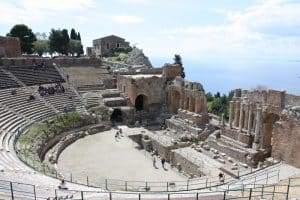‘Spit’ and sulphur, ‘icky’ mud and pizza – stimulating the senses on Geography trip

From enjoying spectacular views near the summit of Mount Etna to learning how to make their own pizzas, QE’s younger pupils sampled Sicily’s best on a Geography tour.
 Forty-one boys from Years 7, 8 and 9 took part in the five-day trip led by Geography teacher Helen Davies, who was accompanied by four other members of staff.
Forty-one boys from Years 7, 8 and 9 took part in the five-day trip led by Geography teacher Helen Davies, who was accompanied by four other members of staff.
After the first evening spent ten-pin bowling, the first full day brought a coach trip to Mount Etna, Europe’s highest active volcano. The guide-led tour included travel, first in a cable car and then in jeeps, to reach a height of 2,900m, where the strong winds brought heavy windchill that was felt even through multiple layers of clothing.
Nivain Goonasekera, of Year 9, said: “Whilst the whole trip was incredible, my favourite part was probably reaching the summit of Mount Etna: we were all taken aback by the photogenic, breath-taking views, which totally compensated for it being -5C!”
After returning to lower altitudes and warmer temperatures, they visited the nearby Alcantara Gorge – a basalt formation created by Mount Etna’s volcanic activity.
 On the following day, after getting up at 5:30am, the boys set off for a full-day visit to the Aeolian Islands, a volcanic archipelago visible from Sicily.
On the following day, after getting up at 5:30am, the boys set off for a full-day visit to the Aeolian Islands, a volcanic archipelago visible from Sicily.
A short boat ride took them from Milazzo to Lipari, the largest of the islands, which boasts deep caverns, steep cliffs and attractive views. Then, on the island of Vulcano, the group sampled the mud baths, where a pool of brackish water and mud clay is continuously agitated by sulphurous bubbles, the olfactory effects of which are known to linger, as Nikhil Mark, of Year 7, discovered: “It was a bit ‘icky’, but the mud was warm. We were all stinking like rotten eggs when we got back.”
On day four, the group visited the Straits of Messina and Tindari Lakes, where they saw the linguetta di sabbia, a sandbank stretching 1.5km into the Tyrrhenian Sea. “It is an extraordinary sight, for which the correct geographical term is a ‘spit’,” said Miss Davies.
 One evening activity popular with the boys was the visit to a restaurant, the Café Sikelia. There they not only learned about the history of the pizza and the different types available, but also had the chance to try their hand at making one themselves, before tucking into a pizza dinner.
One evening activity popular with the boys was the visit to a restaurant, the Café Sikelia. There they not only learned about the history of the pizza and the different types available, but also had the chance to try their hand at making one themselves, before tucking into a pizza dinner.
On the final day, they headed for the amphitheatre at Taormina, which was built by the Greeks in the third century BC and expanded by the Romans. Robert Hyland, Head of English, was able to give the boys plenty of information about the history of the amphitheatre.
